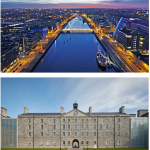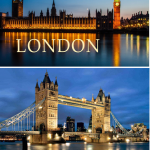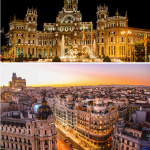By Evangelos Zikos & Evangelos Kalogeris
- Reykjavik
Reykjavík is the capital and largest city of Iceland. It is located in southwestern Iceland, on the southern shore of Faxaflói bay. Its latitude is 64°08′ N, making it the world’s northernmost capital of a sovereign state. With a population of around 131,136 (and 233,034 in the Capital Region),] it is the center of Iceland’s cultural, economic, and governmental activity, and is a popular tourist destination.
- DUBLIN
Dublin is the capital and largest city of IrelandSituated on a bay on the east coast, at the mouth of the River Liffey, it lies within the province of Leinster. It is bordered on the south by the Dublin Mountains, a part of the Wicklow Mountains range. It has an urban area population of 1,173,179while the population of the Dublin Region (formerly County Dublin) as of 2016 was 1,347,359The population of the Greater Dublin Area was 1,904,806 per the 2016 census.
- LONDON
London is the capital and largest city of England and the United Kingdom. The city stands on the River Thames in the south-east of England, at the head of its 50-mile (80 km) estuary leading to the North Sea. London has been a major settlement for two millennia. Londinium was founded by the Romans. The City of London, London’s ancient core and financial centre − an area of just 1.12 square miles (2.9 km2) and colloquially known as the Square Mile − retains boundaries that closely follow its medieval limits][note 1] The adjacent City of Westminster is an Inner London borough and has for centuries been the location of much of the national government. Thirty one additional boroughs north and south of the river also comprise modern London. London is governed by the mayor of London and the London Assembly.
- PARIS
Paris is the capital and most populous city of France, with an estimated population of 2,148,271 residents as of 2020, in an area of 105 square kilometres (41 square miles).[1] Since the 17th century, Paris has been one of Europe’s major centres of finance, diplomacy, commerce, fashion, science and arts. The City of Paris is the centre and seat of government of the Île-de-France, or Paris Region, which has an estimated official 2020 population of 12,278,210, or about 18 percent of the population of FranceThe Paris Region had a GDP of €709 billion ($808 billion) in 2017According to the Economist Intelligence Unit Worldwide Cost of Living Survey in 2018, Paris was the second most expensive city in the world, after Singapore, and ahead of Zürich, Hong Kong, Oslo and Geneva Another source ranked Paris as most expensive, on a par with Singapore and Hong Kong, in 2018.
- MADRID
Madrid is the capital and most-populous city of Spain. The city has almost 3.3 million inhabitants and a metropolitan area population of approximately 6.5 million. It is the second-largest city in the European Union (EU), surpassed only by Berlin, and its monocentric metropolitan area is the second-largest in the EU, surpassed only by Paris.The municipality covers 604.3 km2.
- LISBEN
Lisbon] is the capital and the largest city of Portugal, with an estimated population of 505,526 within its administrative limits in an area of 100.05 km2. Lisbon’s urban area extends beyond the city’s administrative limits with a population of around 2.8 million people, being the 10th-most populous urban area in the European Union. About 3 million people live in the Lisbon metropolitan area, which represents approximately 27% of the country’s population. It is mainland Europe’s westernmost capital city and the only one along the Atlantic coast. Lisbon lies in the western Iberian Peninsula on the Atlantic Ocean and the River Tagus. The westernmost portions of its metro area, the Portuguese Riviera, form the westernmost point of Continental Europe, culminating at Cabo da Roca.
Main source https://www.wikipedia.org/










